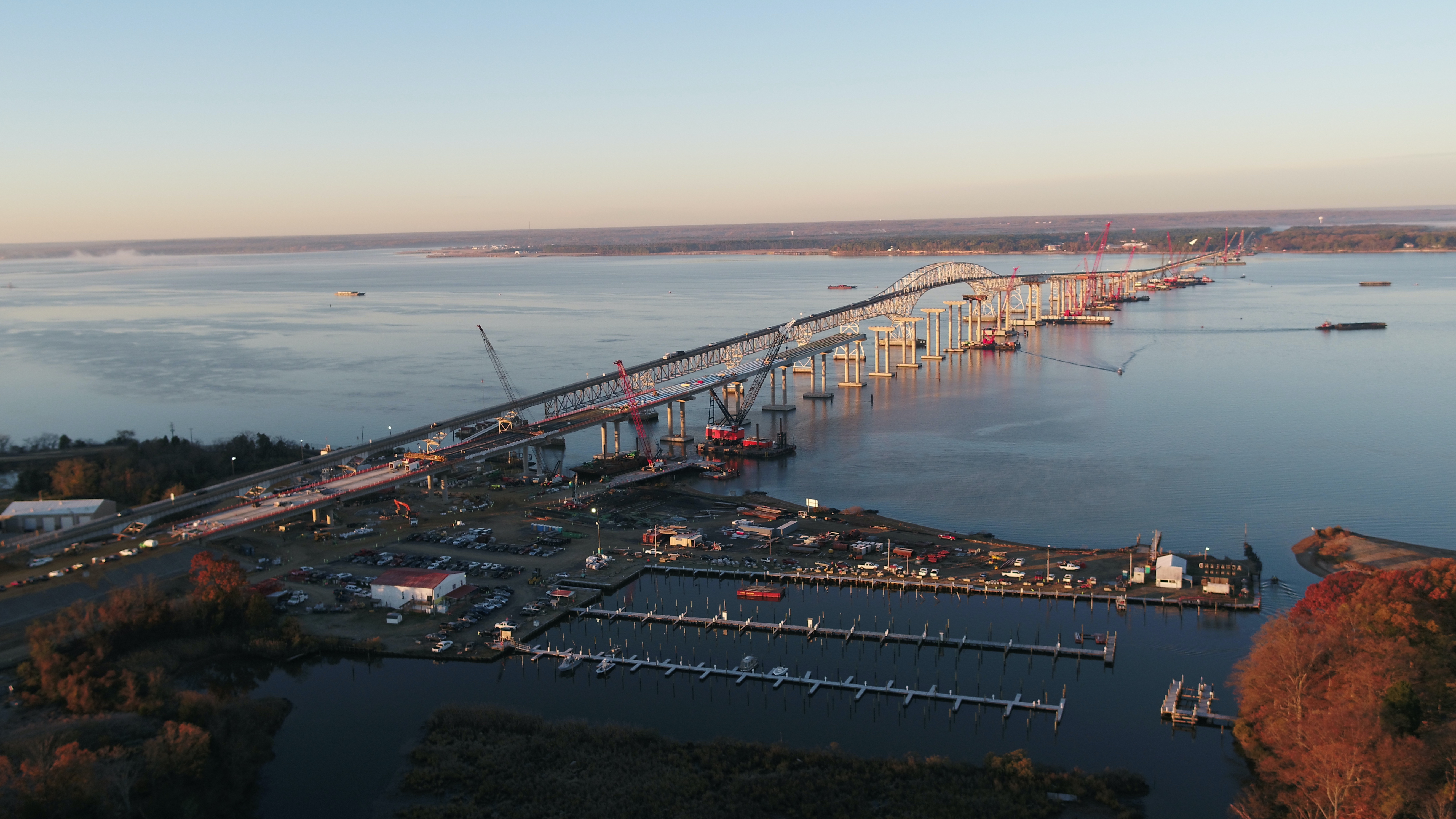Loan Delay Could Scramble Funding for New Potomac River Crossing

The U.S. Dept. of Transportation had yet to approve a $200 million TIFIA loan for the Nice/Middleton Bridge project.
Photo courtesy of the Maryland Transportation Authority
Delay in approval of a federal loan may force Maryland to revise its funding strategy for a new Potomac River crossing that has been under construction for more than a year.
A recent project briefing for the Maryland Transportation Authority’s (MDTA) board of directors noted that the U.S. Dept. of Transportation had yet to approve a $200- million TIFIA loan for the Nice/Middleton Bridge project, a new 1.9-mile four-lane tolled structure that will replace a 70-year-old, two-lane bridge connecting southern Maryland with King George County, Va. In recent years, the crossing has seen a sharp uptick in traffic as an alternative to the crowded Interstate 95 corridor through northern Virginia and metropolitan Washington, D.C.
Originally submitted for approval in mid-2019, the TIFIA loan was expected to fund nearly half of the design-build project’s $463-million cost. MDTA officials speculated that the holdup is due to safety concerns after plans for a barrier-separated dedicated lane for cyclists and pedestrians were dropped as a cost-cutting measure. Instead, the new bridge includes more than $2 million of safety enhancements for bicyclists, including bike-friendly roadway joints, lighting and signage.
Should MDTA’s efforts to secure the TIFIA loan prove unsuccessful, the agency reportedly will consider other financing alternatives, including a bond sale that could potentially offset much of savings achieved from eliminating the dedicated bike/pedestrian lane. A decision on how to proceed will likely come early next year.
Meanwhile, a joint venture of Skanska, Corman Kokosing Construction Company and McLean Contracting Co. has been at work on the new bridge since mid-July 2020. Along with wider lanes, increased capacity and automatic tolling technology, the new structure will have a main span vertical clearance of 135 ft to allow passage of tall ships when it opens in 2023. Because Charles County, Md., rejected MDTA’s offer to take over the original bridge for use as a pedestrian/cyclist path, the structure will be demolished and its materials used to create an artificial fish reef.





